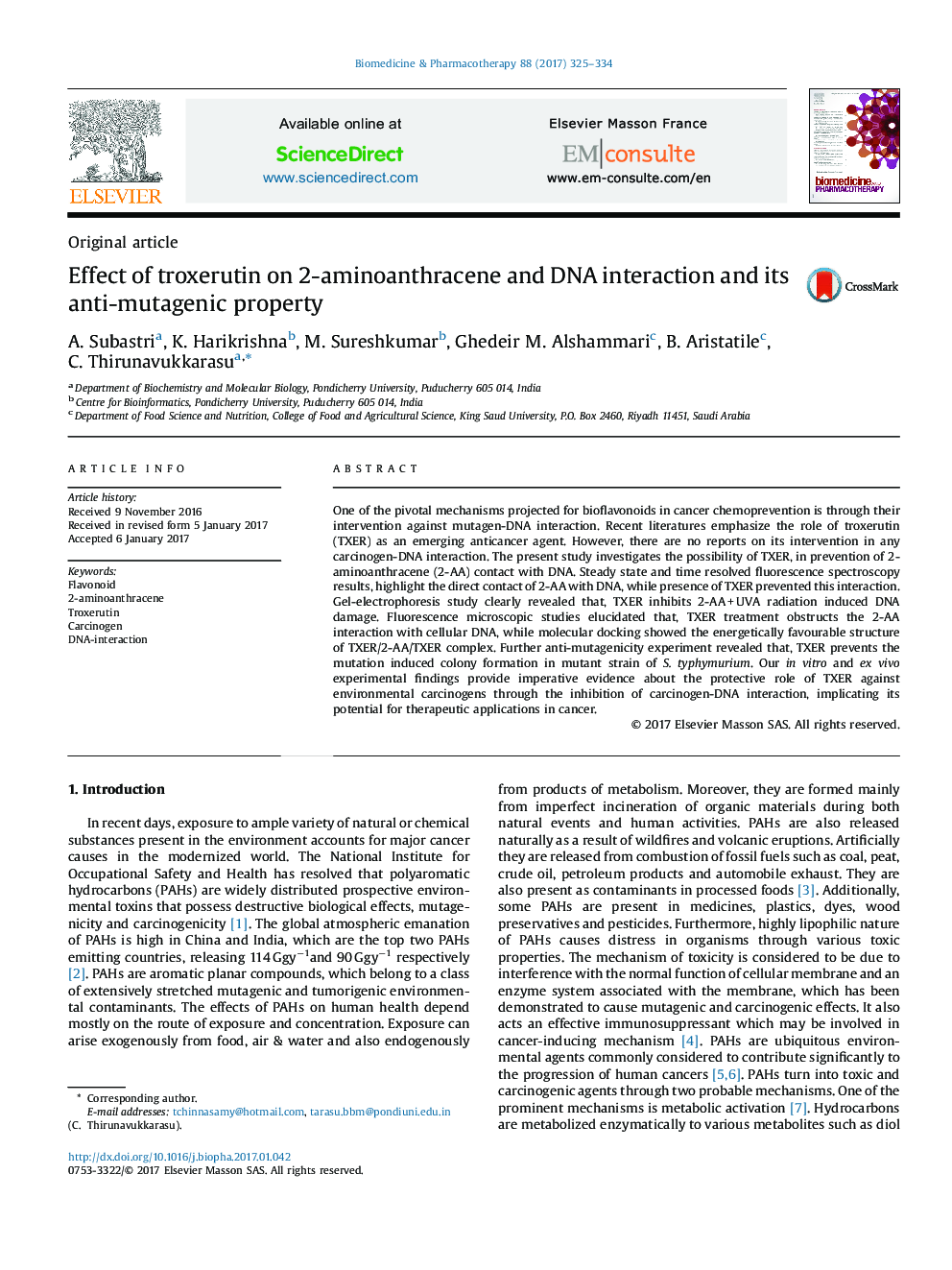| Article ID | Journal | Published Year | Pages | File Type |
|---|---|---|---|---|
| 5553151 | Biomedicine & Pharmacotherapy | 2017 | 10 Pages |
One of the pivotal mechanisms projected for bioflavonoids in cancer chemoprevention is through their intervention against mutagen-DNA interaction. Recent literatures emphasize the role of troxerutin (TXER) as an emerging anticancer agent. However, there are no reports on its intervention in any carcinogen-DNA interaction. The present study investigates the possibility of TXER, in prevention of 2-aminoanthracene (2-AA) contact with DNA. Steady state and time resolved fluorescence spectroscopy results, highlight the direct contact of 2-AA with DNA, while presence of TXER prevented this interaction. Gel-electrophoresis study clearly revealed that, TXER inhibits 2-AAÂ +Â UVA radiation induced DNA damage. Fluorescence microscopic studies elucidated that, TXER treatment obstructs the 2-AA interaction with cellular DNA, while molecular docking showed the energetically favourable structure of TXER/2-AA/TXER complex. Further anti-mutagenicity experiment revealed that, TXER prevents the mutation induced colony formation in mutant strain of S. typhymurium. Our in vitro and ex vivo experimental findings provide imperative evidence about the protective role of TXER against environmental carcinogens through the inhibition of carcinogen-DNA interaction, implicating its potential for therapeutic applications in cancer.
Graphical abstractDownload high-res image (117KB)Download full-size image
